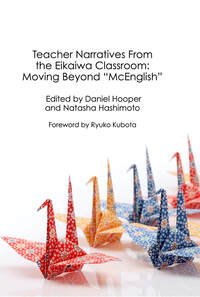
To understand more deeply what I am going on about here, you should read Geoff Jordan’s blog post, and Mura Nava’s blog post first.
Collocations are one of the things that teachers get tasked to teach often, mainly because collocations are one of the things that appear in books often. I reckon it’s because collocations lend themselves to matching exercises and gap fills rather well. I think both the materials teams and teachers mean well.
The problem is how to get a ton of collocations in your brain to recall almost instantaneously. How do you prioritise the ones to teach and the ones to avoid? It’s the problem that underlies Geoff Jordan’s frequent criticisms of The Lexical Approach. Geoff dismisses Hoey’s work on lexical priming as poorly thought out. I don’t, but nor do I advocate a lexical approach, either. The way I understand Hoey is that words that are frequently used together give us an expectation of being together. For example, how would you finish the utterance “I fancy a ham and pineapple…”?
Nosebleed? (That was the first noun that came to mind.) Pizza? Probably the latter, because it fits due to both our experiences of the world as well as the semantics of the grammar. Lots of work by people at or from Kutas Lab (particularly Kutas & Hillyard, 1980; Bentin et al 1993; Lazlo, S. & Federmeier, 2008; Van Petten et al 1999.) has looked at these semantic expectations in reading, and some in listening, and brain scans showed that when the semantic expectation is violated, our brains produce a much larger N400 event-related potential (ERP), basically a negative electrical charge about 400ms after the stimulus, than when the expectation is met.
In a really interesting, long, quite technical article that I had to read for my MA dissertation, Nick Ellis (2006) uses psychological cueing as the foundation of his theory of learning a second language. Basically, if you see X happen shortly before Y, you associate X and Y. Cues can be stronger or weaker depending on how often them being experienced coincides for the learner. This is where I think Ellis overlaps with Hoey, and the Kutas lab work. I think it also has a lot of ramifications for teaching and learning.
Unlike Geoff, I am not quite so pessimistic about the collocation/colligation problem, or even thinking about the need for something as complex as construction grammar. Think about needs of students, think about the kinds of language experience they are likely to need, make it as understandable as possible, and cover the most commonly occurring items as often as possible – and by items I mean phonological as well as lexical and syntactical. This should help build up psychological cues.
Is it a perfect system? No, it is not. Rarely, if ever, does classroom language teaching come close to the ideal of learning a language as a child. But, the theory says it is likely to work, with some hiccups along the way. Some of the bits of language that are not salient (easily paid attention to) could fall by the wayside. There might be interventions by teachers here as when it is deemed necessary.
So, if we teach in a naturalistic way we should build up cues, no matter how long that takes, and without worrying if they are going to be anywhere near as strong as first-language cues. That, I think, is a realistic goal for language teaching.
References
Bentin, S., Kutas, M., and Hillyard, S. A. (1993) Electrophysiological evidence for task effects on semantic priming in auditory word processing, Psychophysiology 30(2), 161-169.
Ellis, N. (2006) Language acquisition as rational contingency learning. Applied Linguistics 27, 1-24.
Hoey, M. (2005). Lexical Priming. Routledge.
Jordan, G. (2020) Anybody seen a pineapple. What do you think you’re doing. April 21st 2020. https://applingtesol.wordpress.com/2020/04/21/anybody-seen-a-pineapple/
Kutas, M. and Hillyard, S. A. (1980) Reading Senseless Sentences: Brain Potentials Reflect Semantic Incongruity. Science, 1980 (207). 203-205.
Lazlo, S. & Federmeier, K.D. (2008) Minding the PS, queues, and PXQs: Uniformity of semantic processing across multiple stimulus types. Psychophysiology, 45 (2008), 458–466. DOI: 10.1111/j.1469-8986.2007.00636.x
Nava, M. (2020) Why the pineapple. EFL Notes. April 22nd 2020. https://eflnotes.wordpress.com/2020/04/22/why-the-pineapple/
Van Petten, C., Coulson, S., Rubin, S., Plante, E., & Parks, M. (1999). Time course of word identification and semantic integration in spoken language. Journal Of Experimental Psychology: Learning, Memory, And Cognition, 25(2), 394-417. doi:10.1037/0278-7393.25.2.394




